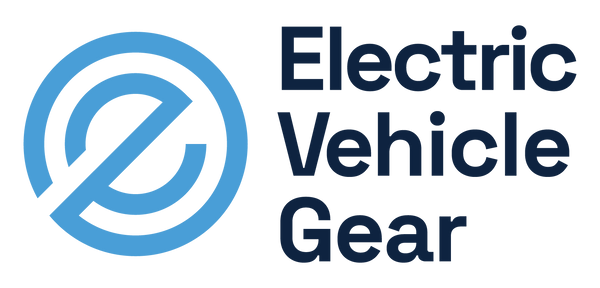Understanding EV Charging Speeds and Connectors in North America

Electric Vehicles (EVs) are becoming increasingly popular due to their environmental benefits and advancements in technology. Understanding the different speeds of EV charging and the common connectors used in North America is essential for current and prospective EV owners. Here's a comprehensive overview of the various EV charging options, including mobile charging, and a summary of the information in an easy-to-reference table.
EV Charging Speeds
EV charging speeds are generally categorized into three levels: Level 1, Level 2, and Level 3 (also known as DC Fast Charging). Each level offers different charging speeds and is suitable for different scenarios.
Level 1 Charging
Speed: Slow
Power Output: 1.4 kW (120V, 12-16A)
Charging Time: Adds about 3-5 miles of range per hour of charging.
Level 1 charging uses a standard household 120V outlet and is the slowest form of EV charging. It is best suited for overnight charging at home or in situations where the vehicle can be plugged in for extended periods. Most EVs come with a Level 1 charging cable that can be plugged into any regular electrical outlet.
Use Cases:
- Home Charging: Ideal for overnight charging when the vehicle is parked for several hours.
- Extended Parking: Suitable for workplaces or other locations where the vehicle remains parked for an extended period, like airports.
- Mobile Charging: Portable Level 1 chargers that plug into regular wall outlets are available for emergency situations or when traditional charging stations are not accessible.
Common Level 1 Charging Plugs in North America:
Level 2 Charging
Speed: Moderate
Power Output: 3.3 to 19.2 kW (240V, 20-100A)
Charging Time: Adds about 12-60 miles of range per hour of charging.
Level 2 charging requires a 240V outlet, similar to those used for electric dryers or ovens. This type of charging is commonly found at homes, workplaces, and public charging stations. It significantly reduces charging time compared to Level 1 and is suitable for daily use.
Use Cases:
- Home Charging: Faster charging for daily top-ups.
- Workplace Charging: Allows employees to charge during work hours.
- Public Charging: Available at various locations like shopping centers, allowing for quicker top-ups during errands.
- Mobile Charging: Portable Level 2 chargers that plug into 240V outlets offer flexibility and are useful in locations without dedicated EV charging infrastructure, such as camping trips or visits to remote areas.
Level 3 Charging (DC Fast Charging)
Speed: Fast
Power Output: 50 to 350 kW (400-800V DC)
Charging Time: Adds about 100-200 miles of range per 30 minutes of charging.
Level 3 charging, or DC Fast Charging, uses direct current (DC) to charge the battery rapidly. It is primarily available at public charging stations along highways and major routes, making it ideal for long-distance travel. Not all EVs can use DC Fast Chargers, so it's important to check compatibility.
Use Cases:
- Long-Distance Travel: Perfect for quickly adding significant range during road trips.
- Emergency Charging: Provides a quick boost when the battery is low and time is of the essence.
Common EV Connectors in North America
There are several types of connectors used for EV charging in North America, each suited for different charging levels and vehicle types.
J1772 (Type 1)

Use: Level 1 and Level 2 Charging
Compatibility: Most EVs sold in North America
The J1772 connector is the standard for Level 1 and Level 2 charging in North America. It is compatible with most EVs and is commonly found at public and residential charging stations.
NACS (North American Charging Standard)

Use: Level 1, Level 2, and Level 3 Charging (Tesla Supercharger)
Compatibility: Tesla vehicles
Tesla uses a proprietary connector, known as the North American Charging Standard (NACS), for all its charging levels, including the Tesla Supercharger network. Adapters are available for Tesla owners to use J1772 and CHAdeMO connectors.
CCS (Combined Charging System)

Use: Level 2 and Level 3 Charging (DC Fast Charging)
Compatibility: Most new EVs sold in North America
The CCS connector combines the J1772 connector with additional DC pins for fast charging. It is the current standard for DC Fast Charging and is used by many newer EV models, although most EV manufacturers are switching to the North American Charging Standard for the 2025 models years and onward.
CHAdeMO

Use: Level 3 Charging (DC Fast Charging)
Compatibility: Primarily used by Japanese EV manufacturers
CHAdeMO is another standard for DC Fast Charging, primarily used by Japanese automakers like Nissan and Mitsubishi. Some public charging stations offer both CHAdeMO and CCS connectors.
Summary Tables
|
Charging Level |
Power Output |
Charging Speed |
Common Connectors |
Use Case |
|
Level 1 |
1.4 kW (120V) |
3-5 miles of range per hour |
J1772, NACS |
Home charging, overnight charging, mobile charging |
|
Level 2 |
3.3-19.2 kW (240V) |
12-60 miles of range per hour |
J1772, NACS, CCS |
Home, workplace, public charging, mobile charging |
|
Level 3 (DC Fast) |
50-350 kW (400-800V) |
100-200 miles of range per 30 min |
CCS, CHAdeMO, NACS |
Public charging stations, long trips |
Understanding these charging options and connectors ensures that drivers can make informed decisions about their charging needs, whether at home, work, or on the go.
